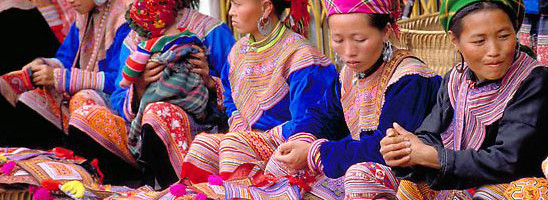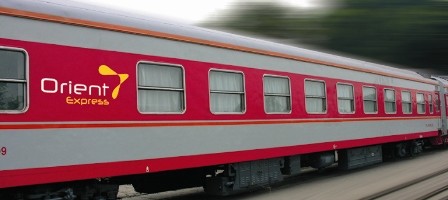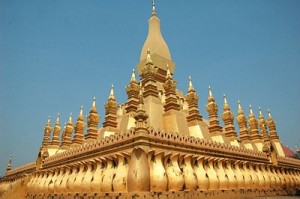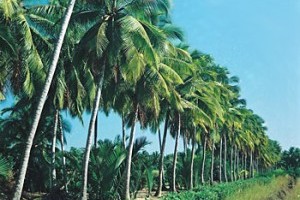Posted in Blog |

Bac Ha Market Bac Ha market is well-known for its naturally sub-tropical scenery. Tam Hoa plums are really a local specialty: sweet and fresh. This seems to be created by its own land, people and nature. Average temperature here is 19°C and it’s not so cold as in Sa Pa. Bac Ha is specifically identified by each mount, each house and naturally-made carpet of white plum-flowers in spring. There are 14 ethnic minorities and the Mong ethnics count for 47% then the Dao, Tay, Nung, Phu La… Mountaineers take care of their horses as their properties, means of transport and close friends. Besides plums, Bac Ha is reputed for its alcohol (made of maize). Maize is grown on high mountains, its low in productivity but high in nutrition. To make alcohol, it’s fermented with Hong My seed (the local only plant). Bac Ha alcohol is well-known due to its source of water. So it’s surely believed never to have faulted one in Bac Ha market. Mong or Tay or Dao ethnics’ minority girls and boys, with their best dresses on, go to the market to relax and meet their friends. At sunset, they leave with a promise to see again. Visitors to Bac Ha are opportune to understand the local traditions and customs, taste local specialties, meet nice people and know a land code-named: white plateau. Coc Ly Market It is the colorful market in a mountainous area where the Flower H’mong mainly gathers to exchange their homemade products.This Tuesday market is about 35km from Bac Ha. You can get here via a fairly good road, or by road and river; hotels in Sapa and Bac Ha can organise trips. Coc ly is a small village on the Chay river inhabited by the Flower H’mong Minority people. The Flower H’mong traditionally wear a distinctive and bright coloured costume. They are a gentle, softly spoken people who live in the steep mountainous country close to the Chinese border. Because Coc Ly is more remote than Sapa, the dress and way of life is more traditional than in the large centers. The market deals in fruit, vegetable, pork and chickens, in addition to colourful fabrics and items of traditional dress. There is a buffalo sale in progress and many of these placid animals are tethered close to the market. Buffalo are still widely used in the growing process, especially in the mountainous regions. Can Cau Market Cancau market is one of Vietnam‘s most fascinating open –air market, and isolated market which takes place only on Saturday every week. This is a lovely local market which still retains the local quaint and authentic being of the main tourist route. The areas is close to China border and in a hidden place, less visitors come here. – Horses, dogs, cat, pigs and textiles…. all on sales! This is of most amazing market you’ve ever seen. Opportunity to takes best photos Sapa Love Market Sapa is also famous for its...
Read More »
Posted in Blog |

How to get there The best way is taking overnight train from Hanoi to Sapa then connect with a road trip for 1 hour. There are many people who try to ask you to buy bus tickets either outside or inside Lao Cai train station, you can accept their invitation, however, you should only paid when the bus really departs. For a comfortable seat, it should be better to book the shuttle bus, you may not be pushing to seat with 15 people for a mini bus of 16 seater. Best time to Travel Sapa is at its green and best time on July, August, September, October and November. Many people suppose this is rainy time but we believe it is a beautiful time for many regions: – Rice & corn planation starts in June and finish in October. This is the wonderful period to admire the green nature and some special rite which deprived from rice cultivation. – The rain often comes in summer but not for long and the view is simple what you expect through the postcards, video and photos – There are less tourists coming to Sapa this time, more promotion for hotels especially 3*, 4* hotels From December to April, the weather turns to be pretty cold but no rain. If you wish to enjoy an adventure without being interupted by weather, this is the good choice. The landscapes remains at their magnificience and awesomeness. Shopping This is one of the most sensitive thing while traveling in Sapa. Many local woman especially Black Hmong and Red Dzao tribe will attract you with some short conversations and persuading you to buy something for them. There maybe 1 person of 1 small group will come to you with a nice talk, however, they may ask you to buy at least 1 piece of each person. Tippings Most of travelers come to Sapa will do trekking or some types of outdoors, the tour guide will consume more energy in Sapa than other part of Vietnam. The tip is not compulsory for many company, specially Sapa Travel Expert, however if the tour guide`s performance is perfect, we encourage you to tip with 5usd/ day/ person. Unique experience in Sapa Hill tribe markets are one of the most unique experience in Sapa. The highlight of this cultural visit originated from the meeting with local tribes from different areas with different customs. At Sapa Travel Expert, we are able to offer you visits to market that you may not meet any tourist and being totally off beaten track to enjoy the authenticity. Off road trekking: for discernning travellers, normal trekking route with numerous of tourists may not be interesting and your experience is so common, we offer you off -road trek that we ensure your experience is different and enjoyable. For such type of tour, we guarantee 100% refund if...
Read More »
Posted in Blog |

Orient Express Train Orient Express Train is wooden carriage, soft sleeper A.C cabin with soft 2 berths VIP, deluxe 2 berths, 4 berths deluxe cabin and two toilet. Each berth is equipped with individual reading lights, baggage storage and spacious trunk for suite case and hand luggage. A Private Orient Deluxe 2 berths cabin and VIP Orient 2 berths cabin create an intimate space for couples with 2 berths only. These cabins are lovingly designed to for those who desire to have the privacy with remarkable interior decor. Besides, our “Orient Express Train” staff members are always ready to offer you the best customer care and complementary services Fanxipan express train Fanxipan Express Train with air-conditioning wooden 2 berths and 4 berths cabins. Each berth is equipped with reading lights, baggage storage, flower, mineral water and napkin. Each passenger will be service food and drink such as fruit juices, tea and snack. Fanxipan Express has a mini bar on the corner of each carriage offering Vietnamese and western delights, snack and drinks. If need, please press the ring in the cabin. Hara express train The brand new Hara Express Train has just been introduced to operate routing Hanoi – Lao Cai – Hanoi with 4 fully decorated carriages with high standard soft sleepers with air-conditioning wooden cabins with soft 2 berths cabin Hara Express Train is wooden carriage, soft sleeper A.C cabin with soft 4 berths and two toilet at either ends. Each berth is equipped with individual reading lights, baggage storage and spacious trunk for suite case and hand luggage. The train is provided with also water and cold tower. King express train Deluxe Vip King Express carriages can accommodate 26 berths with superior and deluxe cabins, accompanied by the hospitality of King express train staff. The enchanting luxury, the comfort facilities of the wood-paneling cabins will make your stay in these carriages memorable. Passengers are to hold the best opportunity to relax or simply let the beauty gliding over your spacious windows. Luxury, inspiration and refreshment are main character of these carriages. All berths are wooden-paneled, air-conditioned with individual reading lights, baggage storage. Passengers are served with a very tasteful drink in the morning upon the arrival to Lao Cai or Hanoi. Superior cabins offer a cozy atmosphere with 4 berths in one compartment, relaxing to read or enjoy an intimate conversation. Deluxe cabins create an intimate space for couples with 2 berths only. These cabins are lovingly designed to for those who desire to have the privacy with remarkable interior decor. They are the epitome of a small observation car. Victoria express train Reaching Sapa has never been more appealing: travel in style on board the luxurious Victoria Express Train. The Victoria Express Train features one dining carriage and two sleeping carriages to make your traveling experience a most comfortable one. The train departs six times...
Read More »
Posted in Blog |

Ham Rong Mountain Named Ham Rong in Vietnamese, Dragon Jaw Mountain overlooks the town of Sapa – just look to the northwest and you will see the peak forming the ‘dragon’s jaw’ rising impressively over the town. The route to the top begins with a walk through a beautiful orchid garden, and then on to a European style botanical garden where you will find a variety of colourful flowers and plants. By this time you will be at a good altitude to stop and appreciate the stunning views across the Muong Hoa valley to Fansipan Moutain, the highest peak in Vietnam, and over Sapa town itself. From here you will continue upwards to Heaven’s Gate where you can enjoy great views of the ‘dragon’s jaw’. Eventually you will reach the mountain peak where you will be treated to unrivalled views over the valley and a birds eye view of Sapa. Take it all in while resting your legs and looking forward to the easy-going descent back to Sapa for a well deserved refreshment! Thac Bac Thac Bac lies beside National Highway No 4D, about 12km from Sa Pa Town’s centre. Silver Waterfall is formed by sources of water from the Lo Sui Tong mountain peak. From the distance, the waterfall looks like a white dragon looking down from the sky. You can reach the Silver Waterfall by motor bike or by car in half an hour. From there you can see stunning view of the surrounding mountains and the last forests belonging to Hoang Lien National Park. Cat Cat Village Cat Cat is a small but bustling village situated at the foot of Fansipan Mountain. Here you will see traditional H’mong homes at their best, and you will be able to meet a H’mong family to learn more about their way of life. The village is also the perfect place to see traditional clothing being made, hemp being dyed and women weaving. Ta Phin Village Ta Phin Village is located in Ta Phin Commune, Sa Pa District, about 12km northeast of Sa Pa Town. The village is surrounded by mountains and owns spectacular rice terraces. The best time to visit Ta Phin is in late afternoon when tourists can enjoy amazing view of sunset over the village and the whole surrounding areas. In Ta Phin Village there are two ethnic minorities living in harmony. They are the Red Dao, who make up the majority, and the Black Mong. It is the best for the tourists to distin-guish the difference in culture, way of living of ethnic minorities in Sapa. Lao Chai village Lao Chai is a village of black H’Mong ethnic group. Lao Chai is a commune composed by three large villages with over 100 families of the Black H’mong ethnic, and people here are quite hospitable. Location :About 7-8 Km southeast of Sapa town on the west bank...
Read More »
Posted in Blog |

Introduction Vientiane is the capital of Laos. Compared to the hectic, bustling capitals in other Southeast Asian countries, Vientiane’s deliciously relaxing atmosphere makes it feel like the small town it is. After you’ve done the round of temples, the best thing to do here has always been to wander down to the riverside, relax with a cold Beerlao – the national beer – and watch the sun set over the Mekong. Of course, the booming tourism industry is changing this by slowly but surely bringing the excesses of Thailand and China to this formerly sleepy city. It has also become famous for bedbugs. Just like any other Southeast Asian capital/major city, Vientiane is experiencing a building boom. Even its Presidential Palace is having a major makeover-addition and a new convention centre has opened recently. History Settled since at least 1000 CE, Vientiane became an important administrative city of the Kingdom of Lan Xang (“million elephants”) in 1545. Ransacked in 1828 by the Siamese, Vientiane experienced a resurgence when it became the capital of the French protectorate, a position it kept after independence 1953, and was unchanged after the communist revolution in 1975. Today Vientiane is the largest city in Laos, with an estimated population of 210,000 in the city itself and some 700,000 in Vientiane Prefecture. Orientation Vientiane is stretched out on the north-eastern bank of a bend in the Mekong River. From the river bank inland, the main roads running parallel to the river are Thanon Fa Ngum, Thanon Setthathirat and Thanon Samsenthai. The central district, Chanthabuli, contains most of Vientiane’s government offices, hotels and restaurants. Vientiane’s widest boulevard, Thanon Lane Xang, runs from the Presidential Palace (now used for government offices and for state receptions) to the northeast around Patuxai, the Victory Gate, towards Pha That Luang, the That Luang Stupa, the most important religious monument in Laos. How to get there By plane Vientiane’s Wattay Airport (IATA: VTE, ICAO: VLVT) is 4 km west of the city. International services are quite limited, but this is slowly changing. International flights There are direct flights to/from: Bangkok Suvarnabhumi: Thai Airways, two flights daily (code share with Lao Airlines) and Lao Airlines, one. Bangkok Aurways also operates one flight daily Hanoi (Viet Nam): Lao Airlines, three times weekly and Vietnam Airlines daily. Ho Chi Minh City (Viet Nam): Vietnam Airlines daily via Phnom Penh; Lao Airlines three times/week via Pakse Kuala Lumpur (Malaysia): AirAsia daily. Phnom Penh (Cambodia): Vietnam Airlines daily. Siem Reap (Cambodia): Lao Airlines three flights weekly via Pakse. Chiang Mai (Thailand): Lao Airlines six times weekly via Luang Prabang. Kunming (Yunnan, West China): China Eastern Airlines operate four and Lao Airlines three flights weekly. Lao Airlines and the Lao Consulate both have offices in the Camellia Hotel, Kunming. Singapore: Lao Airlines flies four times a week on Monday, Wednesday, Friday & Sunday. Domestic flights Lao Airlines...
Read More »
Posted in Blog |

What you can do in Ben Tre is to explore the Delta. boat trips are one of the nicest ways to negotiate the network of channels, but the land in between the waters is just as fascinating. It’s fun to follow some of the small trails along the channels, crossing sidearms on very basic bridges and walking by fruit and coconut orchards. This is a travel blog article by Sapa Travel Introduction Ben Tre is the capital of eponymous Ben Tre Province in southern Vietnam. Although only a 20 min ferry-ride away from bustling My Tho, this seems to be barrier enough to give the town a genuine backwater feeling. Tourists are still a scarce species and locals are open and friendly. Ben Tre Province provides some of the most beautiful scenery in the Mekong delta. The milk coffee colored waters wind their way along small channels lined with water palms, thatch and bamboo houses are nestled in the lush orchards. The famous Vietnamese poet Nguyen Dinh Chieu was born in Ben Tre Province, but until now this fact hasn’t spawned touristic exploitation. How to get there By Boat Ferries from Rach Mieu in My Tho (20 min/24h) arrive some 10 km north of Ben Tre, so you might want to hire a Xe Om to take you to the town center. There is also a ferry from Vinh Long Province to the north-western part of the island, again you may want to hire some sort of transport to cover the remaining distance to Ben Tre town. There is also bus 8 from ferry pier to Ben Tre. It seems frequent, costs about 25,000 Dong for 2h trip. You will need a taxi (moto ~ 20,000 Dong for 10min ride). Pay attention when arriving in Ben Tre as the bus goes to outer bus station. Best seems to stop at the roundabout after the two big bridge and Mat Kinh Dien Bien Phu optic shop and take a taxi (moto ~ 15-20k Dong) to the town center. By Bus Direct (mini-)bus services from Ho Chi Minh City are to be found at Cholon and Mien Tay bus station. A new bridge, constructed in 2009, now connects the city to My Tho so the bus ride is direct, without a ferry. On arrival at the bus station in Ben Tre, a very welcoming man with good English will try to get you to his travelling guide rated guest house by showing books and stuff. In fact, the ride there takes you back where your bus came from, halfway to My Tho, about 10km from Ben Tre. Make sure to get from Ben Tre bus station into the town of Ben Tre, not elsewhere. How to get around The town is stretched along the river, so a bicycle or a motorbike seem to be the best way, especially if you are...
Read More »










